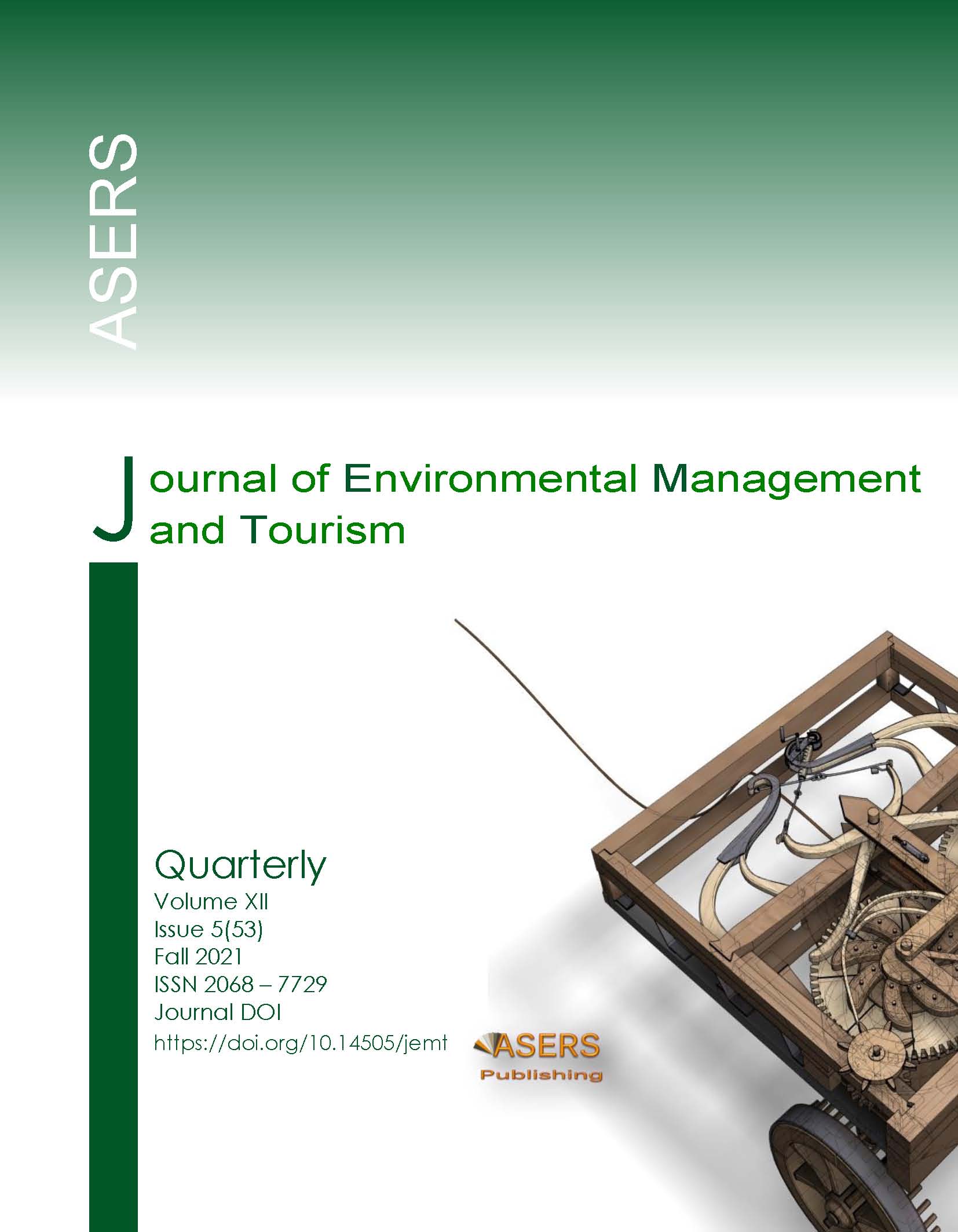Monitoring of the Ecological Condition of Regional Economic Systems in the Context of Sustainable Development
Abstract
The article is devoted to monitoring the ecological condition of regional economic systems in the context of sustainable development on the example of the regions of Ukraine. Monitoring the ecological condition of regional economic systems makes it possible to monitor qualitative changes in the environment components and their compliance with the established requirements in terms of sustainable development in the direction of environmental safety, maximum efficient use of nature, preservation of the environment for future generations. The tasks of monitoring the ecological condition of regional economic systems in the context of sustainable development are singled out, which include: implementation of the systematic diagnostics of the ecological condition of regions; timely and complete informing of regional and local authorities on the real status of the environmental component of sustainable development; analytical decision-making to ensure environmental safety of regions; development of projects on environmental protection, as well as careful and rational use of regional resources. The main objective conditions, which should include monitoring of the ecological condition of regional economic systems in the context of sustainable development, are defined. A methodological approach for monitoring is proposed, which provides for: determination of indicators for the ecological status assessment; normalization of indicators and isolation of stimulants and destimulants from them; calculation of the integrated index of the ecological state of regional economic systems; grouping of regions by values of the integrated index of the ecological condition. Monitoring was carried out in accordance with the proposed methodological approach to the ecological condition of the regions of Ukraine and suggested directions for improving the ecological condition of regional economic systems.
References
[2] Dzhidzhelava, D. and Fedina, A. 2020. The environmental component of construction projects in the aspect of sustainable development. Paper presented at the IOP Conference Series: Materials Science and Engineering, 890(1): 012178. DOI: https://doi.org:/10.1088/1757-899X/890/1/012178
[3] Lazarenko, Yu. et al. 2020. Exploring Strategic Directions for the Local Innovation Ecosystem Development in the Mining Industry. Paper presented at the Vth International Innovative Mining Symposium. E3S Web Conf., 174: 02001. DOI: https://doi.org/10.1051/e3sconf/202017402001
[4] Melis, C., Wold, P.-A., Bjørgen, K. and Moe, B. 2020. Norwegian kindergarten children’s knowledge about the environmental component of sustainable development. Sustainability, 12(19): 1-16. DOI:https://doi.org/10.3390/su12198037
[5] Popelo, O., et al. 2021. Systemic Approach to Assessing Sustainable Development of the Regions. Journal of Environmental Management and Tourism (Volume XII, Summer), 3(51): 742-753. DOI:https://doi.org:/10.14505/jemt.v12.3(51)
[6] Prasad, A. and Mogla, R. 2017. Environmental education: Component of sustainable development. Paper presented at the IEEE Region 10 Humanitarian Technology Conference 2016, R10-HTC 2016 – Proceedings 20 April 2017, 7906788. DOI: https://doi.org:/10.1109/R10-HTC.2016.7906788
[7] Seddon, A.W.R. 2021. Special feature: measuring components of ecological resilience in long-term ecological datasets: Palaeoecology and ecological resilience. Biology Letters 17(1): rsbl20200881. DOI:https://doi.org:/10.1098/rsbl.2020.0881
[8] Shkarlet, S., Ivanova, N., Popelo, O., Dubina, M. and Zhuk, O. 2020. Infrastructural and Regional Development: Theoretical Aspects and Practical Issues. Studies of Applied Economics 38-3(1). DOI:http://dx.doi.org/10.25115/eea.v38i4.4002
[9] Sorokoumova, E.A. and Cherdymovа, E.I. 2021. Developing structural components of ecological consciousness to promote civic identity formation. Psychological Science and Education 26(1): 102-112. DOI: https://doi.org/10.17759/pse.2021260107
[10] Teixeira, L. et al. 2021. Linking human and ecological components to understand human–wildlife conflicts across landscapes and species. Conservation Biology, 35(1): 285-296. DOI:https://doi.org:/10.1111/cobi.13537
[11] Tropea, E., Hynds, P., McDermott, K., Brown, R.S. and Majury, A. 2021. Environmental adaptation of E. coli within private groundwater sources in southeastern Ontario: Implications for groundwater quality monitoring and human health. Environmental Pollution 285 (2021): 117263. DOI:https://doi.org/10.1016/j.envpol.2021.117263
[12] Veilleux, H.D., Misutka, M.D. and Glover, C.N. 2021. Environmental DNA and environmental RNA: Current and prospective applications for biological monitoring. Science of the Total Environment, 782: 146891. DOI:https://doi.org:/10.1016/j.scitotenv.2021.146891
[13] Zamula, I.V. 2015. Accounting component of environmental liabilities management according to the principles of sustainable development. Actual Problems of Economics, 166(4): 261-267.
Copyright© 2025 The Author(s). Published by ASERS Publishing 2025. This is an open access article distributed under the terms of CC-BY 4.0 license.
